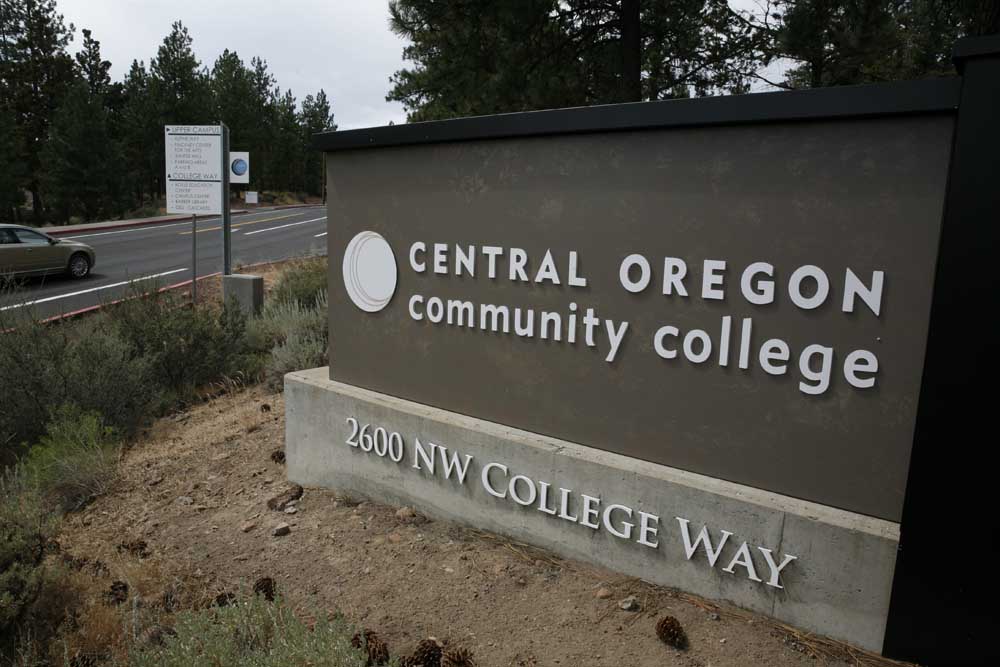COCC trims spending in new, $93 million budget
Published 12:00 am Friday, June 14, 2019

- Central Oregon Community College
Central Oregon Community College has made more than $4 million in cuts in its $93.4 million 2019-20 budget, partly because college administrators expect another year of declining enrollment.
However, COCC students next year may avoid paying a planned new $3-per-credit fee if the state Legislature follows through on its current $640.9 million funding plan for Oregon community colleges. The updated funding would give the schools nearly $100 million more over the 2019-21 biennium than in Gov. Kate Brown’s proposed budget, which would’ve given community colleges collectively $543 million.
COCC spokesman Ron Paradis said if the proposed funding is approved, COCC would get $750,000 more state funding each year of the biennium than anticipated.
David Dona, COCC’s chief financial officer, said legislators’ new plan could save the college from making more drastic budget cuts in future years.
“Had the state not come through in the 12th hour, this would’ve been the last year where we could’ve done incremental adjustments,” he said. “We would’ve had to go in and look at start reducing programs and services. We’re down to the bone.”
The funding bill is being discussed in the Joint Committee on Ways & Means, the Legislature’s budget writing committee. It could be sent to the House by late next week.
About five full-time equivalent positions will be eliminated in the 2019-20 school year, according to Dona.
He added that this doesn’t necessarily mean layoffs — some employees who are retiring or moving to a different department won’t have their old jobs filled.
Last school year, COCC got rid of more than seven full-time positions in a similar fashion.
Dona added that fewer part-time and adjunct faculty members will be hired in the 2019-20 school year, as COCC anticipates a 5% drop in enrollment, resulting in fewer classes needing to be taught.
The expected enrollment drop — which would make 2019-20 the seventh straight year of falling enrollment at COCC — would also likely affect the amount of federal grants COCC will receive. According to Dona, fewer and fewer students have been applying for Pell grants, which help low-income students cover tuition costs. That is the main reason why the college has trimmed about $4.3 million from its financial aid expenditures.
COCC has also cut about $1.3 million from its capital projects fund, although Dona said that is a result of recent construction projects wrapping up and former bonds being paid off.
Like many Oregon public organizations, COCC faces rising costs as a result of the Public Employees Retirement System. A new PERS rate for COCC’s employees added $800,000 in expenses to the budget, Dona said.
Although the college is expecting another year of declining state aid — COCC has budgeted for $7.5 million in state grants for 2019-20, compared to $8.3 million last year — it makes up for that with an anticipated increase in property tax and tuition revenue. COCC plans to take in $17.8 million in property taxes, an increase of more than $1.2 million from last year. And partially due to a 7% tuition hike starting next school year, the college expects to take in roughly $17.7 million in tuition fees, $663,00 more than in the 2018-19 school year.
Dona predicted that COCC’s free-falling enrollment will end soon, however, as some Oregon community colleges have already reported a turnaround in student population. Typically, community college enrollment is highest when the economy is weak.
— Reporter: 541-617-7854, jhogan@bendbulletin.com






